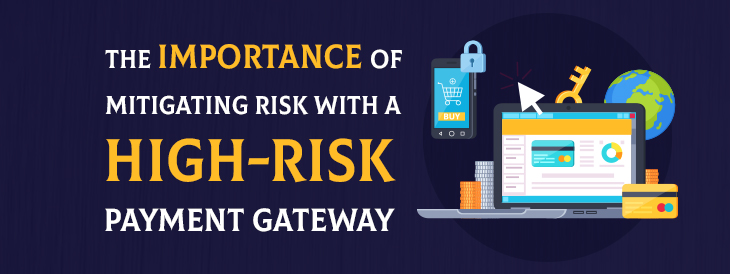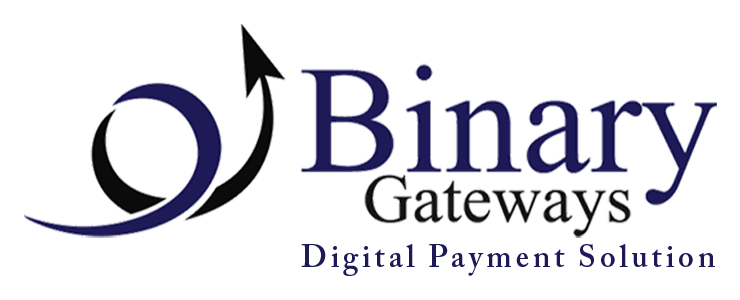The Importance of Mitigating Risk with a High-Risk Payment Gateway
The Importance of Mitigating Risk with a High-Risk Payment Gateway

Mitigating risk is an important consideration when it comes to using a high-risk payment gateway. High-risk payment gateways are designed to help businesses accept payments from customers with higher risk profiles. These gateways provide added security for businesses by reducing the chances of fraudulent transactions. By understanding the importance of mitigating risk with a high-risk payment gateway, businesses can ensure they are making the most secure and cost-effective payment processing decisions. In this blog post, we will explore the importance of mitigating risk with a high-risk payment gateway and the ways it can benefit your business.
Understanding High-Risk Payment Gateways
A high-risk payment gateway is a specialized payment processing system designed for businesses that are considered to be high-risk. These businesses may include online gaming, adult entertainment, travel agencies, and e-commerce platforms with a high rate of chargebacks or fraudulent transactions.
Unlike traditional payment gateways, high-risk payment gateways are equipped with advanced fraud detection and prevention tools to mitigate the risks associated with these industries. They often have stringent underwriting procedures, requiring extensive documentation and background checks for merchants.
High-risk payment gateways are essential for these businesses as they provide secure and reliable payment processing solutions. They offer additional layers of security to protect both merchants and customers from potential fraud and chargebacks.
Moreover, high-risk payment gateways help businesses build trust and credibility by adhering to strict compliance standards and industry regulations. This not only safeguards sensitive customer information but also enhances the overall reputation of the business.
Understanding the role and importance of high-risk payment gateways is crucial for businesses operating in high-risk industries. By utilizing these specialized payment solutions, businesses can minimize risks, protect their financial interests, and provide a seamless payment experience for their customers.
Some Related Blogs
- Mastering The Art Of Secure Travel Payment Solutions
- Get Sales Opportunities With Merchant Accounts For Pet Products
- The Role Of A2a Payments In The Global Payment Landscape
- 3 Must-knows About Wellness Center Payment Processing
Common Risks in Online Payments
Online payments have become an essential part of e-commerce transactions. With the convenience and ease of use that online payments offer, there are also inherent risks that merchants and buyers must be aware of. Common risks associated with online payments include fraudulent transactions, chargebacks, and data breaches.
Fraudulent transactions occur when a fraudulent buyer or seller uses stolen or counterfeit payment credentials to make a purchase or receive payment. Chargebacks are initiated by buyers when they dispute a transaction with their issuing bank or card issuer. This can happen if they did not receive the product or service they paid for, or if they feel they were charged incorrectly. Data breaches can occur when a merchant’s payment system is hacked or when there is a breach in data security.
To mitigate these risks, merchants must use a high-risk payment gateway. A high-risk payment gateway provides an added layer of security to ensure safe and secure transactions. It uses various fraud detection and prevention methods such as address verification, card security code, and 3D secure authentication. By using a high-risk payment gateway, merchants can reduce their exposure to fraud and chargebacks and ensure a safer online shopping experience for their customers.
Importance of Mitigating Risk in High-Risk Transactions
In high-risk transactions, the importance of mitigating risk cannot be overstated. These transactions involve a higher level of uncertainty and potential for fraud or chargebacks. Without proper risk mitigation strategies in place, businesses can suffer significant financial losses and damage to their reputation.
This is where a high-risk payment gateway comes into play. A high-risk payment gateway is specifically designed to handle the unique challenges associated with high-risk transactions. It provides advanced fraud detection and prevention tools, as well as robust security features to protect sensitive customer data.
By using a high-risk payment gateway, businesses can effectively reduce the risk of fraudulent activities and chargebacks. These gateways use sophisticated algorithms and machine learning to analyze each transaction for any signs of fraud, ensuring that only legitimate transactions are approved. They also provide additional layers of security, such as tokenization and encryption, to safeguard customer payment information.
Furthermore, a high-risk payment gateway offers businesses peace of mind. By partnering with a reputable gateway provider, businesses can access round-the-clock customer support and technical assistance, minimizing any disruptions in their payment processing.
Features of a High-Risk Payment Gateway
A high-risk payment gateway is specifically designed to handle transactions with a higher risk of fraud or chargebacks. These gateways typically have advanced security features such as fraud detection tools, encryption protocols, and multi-layered authentication processes. They also offer real-time transaction monitoring and alerts to detect suspicious activity. Additionally, high-risk payment gateways may provide customized risk management tools and solutions to help businesses effectively mitigate risks and protect their financial interests.
Benefits of Using a High-Risk Payment Gateway
Using a high-risk payment gateway offers several benefits for businesses dealing with high-risk transactions. Firstly, it can help reduce the risk of chargebacks and fraud by offering robust fraud prevention measures. Secondly, it can improve transaction processing speed and ensure greater security and compliance. Finally, using a high-risk payment gateway can help businesses expand their customer base by accepting payments from a wider range of countries and payment methods. Overall, investing in a high-risk payment gateway is a smart move for businesses looking to mitigate risk and protect their revenue.
How to Choose the Right High-Risk Payment Gateway Provider
Choosing the right High-Risk Payment Gateway provider is crucial for businesses operating in high-risk industries. Start by evaluating the provider’s experience and reputation in handling high-risk transactions. Look for features such as fraud detection tools, secure encryption protocols, and 24/7 customer support. Additionally, consider their pricing structure and transaction fees to ensure they align with your business’s financial goals. Conduct thorough research and read customer reviews to make an informed decision that mitigates risk and protects your online transactions.
![]()
Email us anytime!
Email customer service 24/7 at info@binarygateways.com
![]()
Call us anytime!
Reach customer care 24/7 at (801) 761-5001
